- myFICO® Forums
- FICO Scoring and Other Credit Topics
- Understanding FICO® Scoring
- Re: How is "amount of debt" factor calculated?
- Subscribe to RSS Feed
- Mark Topic as New
- Mark Topic as Read
- Float this Topic for Current User
- Bookmark
- Subscribe
- Mute
- Printer Friendly Page
How is "amount of debt" factor calculated?
Is your credit card giving you the perks you want?
Browse credit cards from a variety of issuers to see if there's a better card for you.
- Mark as New
- Bookmark
- Subscribe
- Mute
- Subscribe to RSS Feed
- Permalink
- Report Inappropriate Content
How is "amount of debt" factor calculated?
I can't figure out what the "amount of debt" factor is.
It seems to have 3 components: utilization, number of accounts reporting balances, total revolving balances.
But what are they looking for?

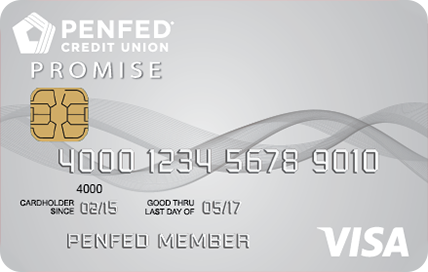

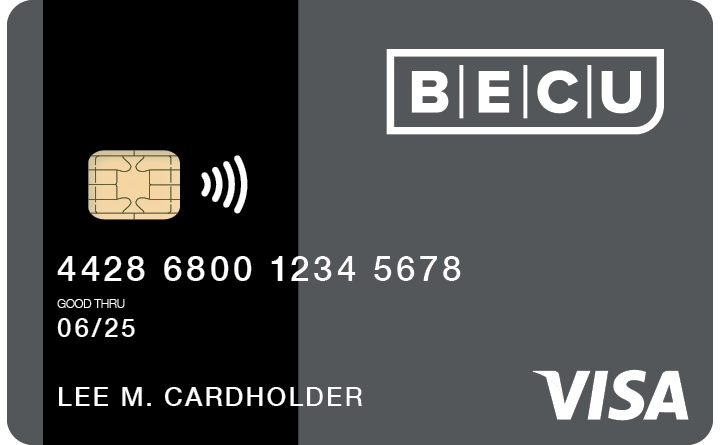










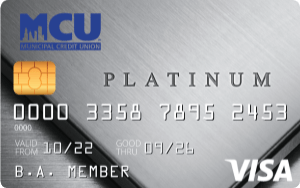







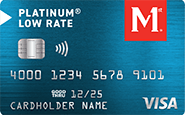



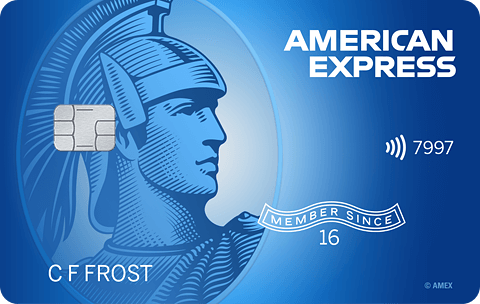




Total revolving limits 569520 (505320 reporting) FICO 8: EQ 689 TU 684 EX 682
- Mark as New
- Bookmark
- Subscribe
- Mute
- Subscribe to RSS Feed
- Permalink
- Report Inappropriate Content
Re: How is "amount of debt" factor calculated?
- Mark as New
- Bookmark
- Subscribe
- Mute
- Subscribe to RSS Feed
- Permalink
- Report Inappropriate Content
Re: How is "amount of debt" factor calculated?
EDIT: I just realized that you are asking about "amount owed" factor in FICO scoring modal. For complete details, read Amount Owed, which explains it in detail.
- Mark as New
- Bookmark
- Subscribe
- Mute
- Subscribe to RSS Feed
- Permalink
- Report Inappropriate Content
Re: How is "amount of debt" factor calculated?
@Anonymous wrote:
Amount of debt is a dollar value; the cumulative reported balance. Utilization is the ratio between the reported balance and reported credit limits. I am not sure what "factor" means in reference to "amount of debt" in your query.
EDIT: I just realized that you are asking about "amount owed" factor in FICO scoring modal. For complete details, read Amount Owed, which explains it in detail.
Thank you for that link.
Unfortunately, although it makes perfect sense, it doesn't explain the mystery that provoked my question.
When I went to my 'credit factors' on MyFICO, the EQ & TU reports showed "excellent" in "amount of debt" while EX showed only "very good" in "amount of debt".
When I went to the 3 subfactors of "amount of debt",
1. utilization was identical on all 3
2. TU & EQ, with 5 balances reporting, was termed "excellent", while EX, with only 4 balances reporting, was only "very good"
3. TU & EQ, with $800 in total reported balances, was "excellent", while EX with $78 in total reported balances was only "very good"
I.e., the results were the exact opposite of what one would be led to expect by the article attached to that link.
So clearly that article is not tellilng us the real story.
(Oh, and yes, in case you're wondering, all other factors are equal)































Total revolving limits 569520 (505320 reporting) FICO 8: EQ 689 TU 684 EX 682
- Mark as New
- Bookmark
- Subscribe
- Mute
- Subscribe to RSS Feed
- Permalink
- Report Inappropriate Content
Re: How is "amount of debt" factor calculated?
Well, its telling the real story, just not the whole stroy.
@SouthJamaica wrote:
>So clearly that article is not tellilng us the real story.
What's missing from the story is determined based only on anecdotal evidence, which is; all three CRAs have their tweaks, undisclosed and undocumented tweaks, applied. However, these tweaks are not enough to explain away slightly abnormal difference in your EX and the other two scores. There is something else going on here.
- Mark as New
- Bookmark
- Subscribe
- Mute
- Subscribe to RSS Feed
- Permalink
- Report Inappropriate Content
Re: How is "amount of debt" factor calculated?
@Anonymous wrote:Well, its telling the real story, just not the whole stroy.
@SouthJamaica wrote:
>So clearly that article is not tellilng us the real story.
What's missing from the story is determined based only on anecdotal evidence, which is; all three CRAs have their tweaks, undisclosed and undocumented tweaks, applied. However, these tweaks are not enough to explain away slightly abnormal difference in your EX and the other two scores. There is something else going on here.
There's nothing "slight" about it. There's a 38 point discrepancy.































Total revolving limits 569520 (505320 reporting) FICO 8: EQ 689 TU 684 EX 682
- Mark as New
- Bookmark
- Subscribe
- Mute
- Subscribe to RSS Feed
- Permalink
- Report Inappropriate Content
Re: How is "amount of debt" factor calculated?
@SouthJamaica wrote:
@Anonymous wrote:
Amount of debt is a dollar value; the cumulative reported balance. Utilization is the ratio between the reported balance and reported credit limits. I am not sure what "factor" means in reference to "amount of debt" in your query.
EDIT: I just realized that you are asking about "amount owed" factor in FICO scoring modal. For complete details, read Amount Owed, which explains it in detail.Thank you for that link.
Unfortunately, although it makes perfect sense, it doesn't explain the mystery that provoked my question.
When I went to my 'credit factors' on MyFICO, the EQ & TU reports showed "excellent" in "amount of debt" while EX showed only "very good" in "amount of debt".
When I went to the 3 subfactors of "amount of debt",
1. utilization was identical on all 3
2. TU & EQ, with 5 balances reporting, was termed "excellent", while EX, with only 4 balances reporting, was only "very good"
3. TU & EQ, with $800 in total reported balances, was "excellent", while EX with $78 in total reported balances was only "very good"
I.e., the results were the exact opposite of what one would be led to expect by the article attached to that link.
So clearly that article is not tellilng us the real story.
(Oh, and yes, in case you're wondering, all other factors are equal)
As mentioned in another thread you clearly have a credit card not showing up on EX [neither its balance nor its CL]. I suspect it it may be one of your highest CL cards.
I may have this wrong but, "amount of debt" may equate to monthly payment obligations divided by total credit.
Monthly payment obligations include: minimum due on each credit card (not CC balance if it is more than min due) and monthly installment loan payments.
Total credit = sum of credit limits on all open/active credit cards + sum of original installment loans on open loan loans.
Therefore, if a $27.5 k card is missing on EX with charges on the card are $712, your min due for the card may only be $25.00. The missing card could possibly drop you to a lower category - remember it is min due not balance that goes into this number. I
Edit add - see below
I just remembered - my CRA report lists a debt ratio which was the sum of all payment obligations (CC balances and outstanding loans) divided by total of card CLs+original loan amounts. This might be what you rating is based on (I had a VG rating on a CRA report missing a high CL card but E ratings on the other 2 that listed the card. However, this difference did not affect my Fico credit scores relative to one another.
Cautionary note - This metric appears to be used in the presentation rating for amount of debt but IS NOT used in scoring. [The factor that is used in scoring is total of balances on all open installment loans including mortgages divided by total of original loan amounts on open accounts]
Example:
1) you have 4 CCs with CLs of $27.5k, $10k, $5k and $5k
2) You have a $150k 15 year, mortgage with $1200/mo payments .
3) You have reported balances of $600 on the $27.5k card. and $100 on the $10k card and $50 on one $5k card
4) Your loan balance is $90k
Here's how things appear to stack up
a) Total debt = 90k + 0.6k + 0.15k = $90.65k ($90.15k withouit the high CL card)
b) Total credit = 150k + 27.5k + 10k + 5k+ 5k = 197.5k ($170k without the $27.5 k card)
CaseI - Debt ratio case all cards showing: 90.65/197.5 = 45.9%
Case II - Debt ratio case high CL card missing = 90.15/170 = 53.0%
In this example, if under 50% debt ratio is a threshold, Case I could rate higher.
Below is a summary table that comes with Equifax credit reports that illustrates the two debt ratios. The loan debt to credit ratio (shown as 41%) is used in Fico scoring; the overall debt to credit ratio (shown as 30%) appears to be used for the category rating. In this illustration there are no open "non mortgage" installment loans. If there were, the Fico scoring factor would be based on Mortgage + installment combined.
Fico 8: .......EQ 850 TU 850 EX 850
Fico 4 .....:. EQ 809 TU 823 EX 830 EX Fico 98: 842
Fico 8 BC:. EQ 892 TU 900 EX 900
Fico 8 AU:. EQ 887 TU 897 EX 899
Fico 4 BC:. EQ 826 TU 858, EX Fico 98 BC: 870
Fico 4 AU:. EQ 831 TU 872, EX Fico 98 AU: 861
VS 3.0:...... EQ 835 TU 835 EX 835
CBIS: ........EQ LN Auto 940 EQ LN Home 870 TU Auto 902 TU Home 950
- Mark as New
- Bookmark
- Subscribe
- Mute
- Subscribe to RSS Feed
- Permalink
- Report Inappropriate Content
Re: How is "amount of debt" factor calculated?
@Thomas_Thumb wrote:
@SouthJamaica wrote:
@Anonymous wrote:
Amount of debt is a dollar value; the cumulative reported balance. Utilization is the ratio between the reported balance and reported credit limits. I am not sure what "factor" means in reference to "amount of debt" in your query.
EDIT: I just realized that you are asking about "amount owed" factor in FICO scoring modal. For complete details, read Amount Owed, which explains it in detail.Thank you for that link.
Unfortunately, although it makes perfect sense, it doesn't explain the mystery that provoked my question.
When I went to my 'credit factors' on MyFICO, the EQ & TU reports showed "excellent" in "amount of debt" while EX showed only "very good" in "amount of debt".
When I went to the 3 subfactors of "amount of debt",
1. utilization was identical on all 3
2. TU & EQ, with 5 balances reporting, was termed "excellent", while EX, with only 4 balances reporting, was only "very good"
3. TU & EQ, with $800 in total reported balances, was "excellent", while EX with $78 in total reported balances was only "very good"
I.e., the results were the exact opposite of what one would be led to expect by the article attached to that link.
So clearly that article is not tellilng us the real story.
(Oh, and yes, in case you're wondering, all other factors are equal)
As mentioned in another thread you clearly have a credit card not showing up on EX [neither its balance nor its CL]. I suspect it it may be one of your highest CL cards.
Not so, they're all showing the same number of accounts
I may have this wrong but, "amount of debt" may equate to monthly payment obligations divided by total credit.
It doesn't say that; it cites 3 subfactors: utilization, number of accts reporting balances, & total reported revolving balances... this is the Equifax version:
Monthly payment obligations include: minimum due on each credit card (not CC balance if it is more than min due) and monthly installment loan payments.
Total credit = sum of credit limits on all open/active credit cards + sum of original installment loans on open loan loans.
Therefore, if a $27.5 k card is missing on EX with charges on the card are $712, your min due for the card may only be $25.00. The missing card could possibly drop you to a lower category - remember it is min due not balance that goes into this number. I
Edit add - see below
I just remembered - my CRA report lists a debt ratio which was the sum of all payment obligations (CC balances and outstanding loans) divided by total of card CLs+original loan amounts. This might be what you rating is based on (I had a VG rating on a CRA report missing a high CL card but E ratings on the other 2 that listed the card. However, this difference did not affect my Fico credit scores relative to one another.
Cautionary note - This metric appears to be used in the presentation rating for amount of debt but IS NOT used in scoring. [The factor that is used in scoring is total of balances on all open installment loans including mortgages divided by total of original loan amounts on open accounts]
Example:
1) you have 4 CCs with CLs of $27.5k, $10k, $5k and $5k
2) You have a $150k 15 year, mortgage with $1200/mo payments .
3) You have reported balances of $600 on the $27.5k card. and $100 on the $10k card and $50 on one $5k card
4) Your loan balance is $90k
Here's how things appear to stack up
a) Total debt = 90k + 0.6k + 0.15k = $90.65k ($90.15k withouit the high CL card)
b) Total credit = 150k + 27.5k + 10k + 5k+ 5k = 197.5k ($170k without the $27.5 k card)
CaseI - Debt ratio case all cards showing: 90.65/197.5 = 45.9%
Case II - Debt ratio case high CL card missing = 90.15/170 = 53.0%
In this example, if under 50% debt ratio is a threshold, Case I could rate higher.
Below is a summary table that comes with Equifax credit reports that illustrates the two debt ratios. The loan debt to credit ratio (shown as 41%) is used in Fico scoring; the overall debt to credit ratio (shown as 30%) appears to be used for the category rating. In this illustration there are no open "non mortgage" installment loans. If there were, the Fico scoring factor would be based on Mortgage + installment combined.
Your computations are in a different universe than what I'm seeing. Go to your account in MyFICO then click on "scores" then look at FICO Score 8 ingredients and you'll see what I'm talking about.































Total revolving limits 569520 (505320 reporting) FICO 8: EQ 689 TU 684 EX 682
- Mark as New
- Bookmark
- Subscribe
- Mute
- Subscribe to RSS Feed
- Permalink
- Report Inappropriate Content
Re: How is "amount of debt" factor calculated?
SJ,
At the end of the day a 38 point score difference is not caused by your revolving accounts showing slightly different among the CRAs. Thus, the focus on other elements associated with "Amounts you owe". Ultimately, something else such as inquiries or negatives may be reporting differently and that could be the primary influence on score.
Below are the elements Fico lists in the amount owed category. Since you have already shown element # 5 is 1% in both cases, other elements appear to be influencing you rating and score. The presentation rating and score do not necessarily go hand in hand.
The example focused on looking at the 1st element listed below as a possible difference in your presentation rating. Element # 6 does significantly influence Fico score. I don't recall if you have mortgage/installment loans but, if so, do they show the same for all CRAs? Do you have any "other" accounts?
Amounts you owe:
About 30% evaluates how much debt you have:
- Amount owed on all of your accounts.
- What you owe on different account types.
- Whether you show balances on certain accounts.
- The number of accounts with balances.
- The percentage of your total credit line (credit cards & other revolving accounts) in use.
- How much you owe on your installment accounts, compared with the original loan amounts.
The account summary table I get direct from Equifax is a nice tool for comparison to identify diffrence. I did not see the same type summary on my 3B report from MyFico
Fico 8: .......EQ 850 TU 850 EX 850
Fico 4 .....:. EQ 809 TU 823 EX 830 EX Fico 98: 842
Fico 8 BC:. EQ 892 TU 900 EX 900
Fico 8 AU:. EQ 887 TU 897 EX 899
Fico 4 BC:. EQ 826 TU 858, EX Fico 98 BC: 870
Fico 4 AU:. EQ 831 TU 872, EX Fico 98 AU: 861
VS 3.0:...... EQ 835 TU 835 EX 835
CBIS: ........EQ LN Auto 940 EQ LN Home 870 TU Auto 902 TU Home 950
- Mark as New
- Bookmark
- Subscribe
- Mute
- Subscribe to RSS Feed
- Permalink
- Report Inappropriate Content
Re: How is "amount of debt" factor calculated?
@Thomas_Thumb wrote:SJ,
......... The presentation rating and score do not necessarily go hand in hand.........
In my case, where the 2 that said "exceptional" jumped up 33 and 25 points, respectively, while the one that said "very good" stayed flat.... and there is no other discernible difference... it seems that they may well have gone hand in hand.
So I remain curious as to why the 2 reports showing a larger balance and more accounts reporting a balance, are "exceptional", and the other only "very good", when according to FICO pronouncements the opposite should be the case.































Total revolving limits 569520 (505320 reporting) FICO 8: EQ 689 TU 684 EX 682


